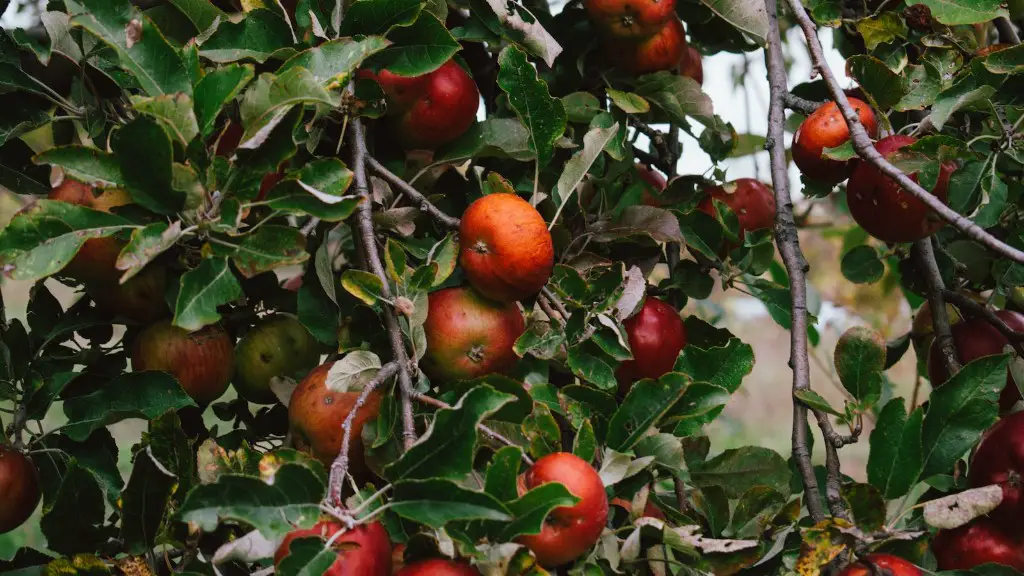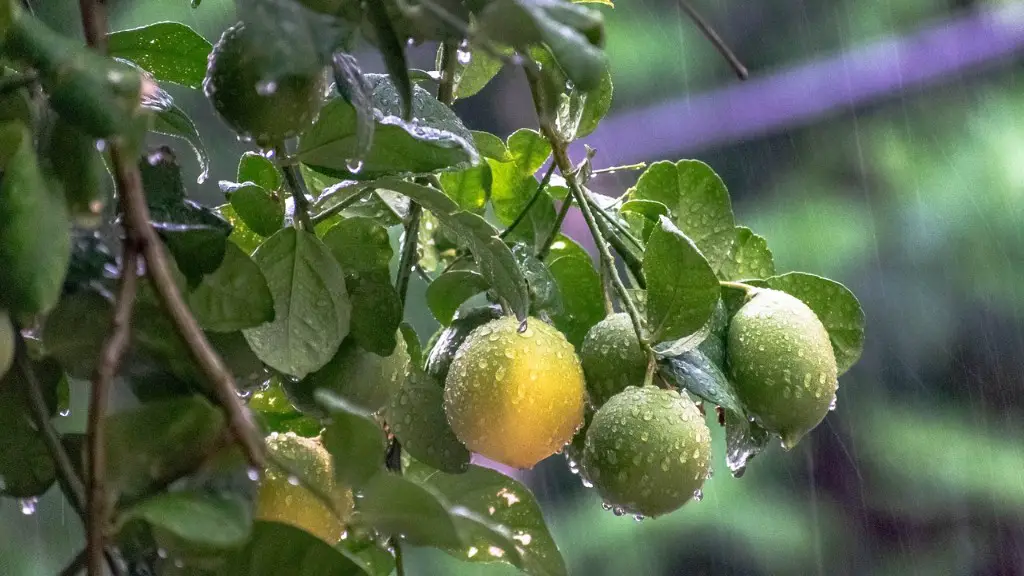Watering Requirements
Avocado trees have high water requirements, and they need water during both the wet and dry seasons. In many areas, rainfall is enough to meet these needs. However, if rainfall is inadequate, supplemental water should be added on a regular basis. In areas with hot and dry climates, it is usually best to irrigate daily. If the tree is planted in a container, it should be checked for dryness twice daily and watered as needed. Experts recommend watering the root zone, rather than sprinkling the leaves, as this will encourage the roots to grow deeper.
Pruning and Trimming
Avocado trees should be pruned and trimmed periodically to encourage growth and keep them healthy. Pruning should begin when the tree is young and should be done with a pair of sharp pruners. Begin by removing dead or dying branches and then thin out dense areas. This will promote air circulation and encourage new growth. If the tree is planted in a container, it should be pruned every couple of months to keep it healthy.
Nutrient Needs
Avocado trees have specific nutrient needs and soil conditions in order to stay healthy. A soil test should be conducted periodically to make sure the tree is receiving the correct amounts of phosphorus and nitrogen. Plants in containers may require fertilization more frequently, as the soil nutrients may deplete faster. A balanced fertilizer, such as 10-10-10, can be used for this purpose. It is also important to keep the soil pH between 6.0-7.0.
Managing Pests and Diseases
Avocado trees can be prone to various pests and diseases. It is important to inspect the tree on a regular basis for any signs of infestation or infection. Common pests include aphids, mealybugs, scale insects, and whiteflies. Common diseases include root rot, blossom blight, and anthracnose. If any signs of pests or disease are present, they should be treated immediately to prevent further damage.
Tree Placement
When planting an avocado tree, it is important to take into account its placement. Ideally, the tree should be in a sunny location with well-draining soil. Avoid planting near high-traffic areas and other trees, as this can increase the risk of disease and root competition. If the tree is planted in a container, it should be placed in an area with partial sun for best results.
Harvesting The Fruit
Avocados are ready to be harvested when they are slightly soft to the touch. Harvesting should take place in the morning, as fruit will become overly ripe with the heat of the day. Fruits that are too ripe to be eaten can be stored in the refrigerator for up to a week.
Mulching and Weeding
Mulching helps retain moisture, keep weeds in check, and regulate soil temperature. It can also prevent soil erosion and runoff. The best mulch for avocado trees is organic material such as wood chips, bark, or straw. A layer of mulch several inches thick should be applied around the base of the tree. Regular weeding should also be done to help keep weeds away from the roots.
Repotting
If the tree is planted in a container, it may need to be repotted from time to time. This should be done when the roots start to become crowded or are starting to encircle the container. A larger container should be chosen, filled with fresh potting soil, and then the tree transferred carefully into the new pot.
Soil Preparation
Preparing the soil before planting is essential for successful avocado tree growth. The soil should be loose and well-draining, with a pH level of 6.0-7.0. Adding organic matter such as compost or manure will help condition the soil and increase its nutrient content. If planting in a container, make sure it is the right size – the bigger the better.
Light Requirements
Avocado trees require full sunlight for optimal growth, so it is important to select an area with plenty of sunshine. If the tree is planted in a container, it should be placed in an area with at least 6-8 hours of sun per day. It is also important to check the tree for signs of sunburn and to provide shade if needed.
Container Planting
When planting an avocado tree in a container, it is imperative to provide the proper soil and drainage. A wide and deep container is best so there is enough room for the roots to grow and spread. The soil should be well drained and should contain a mix of peat moss, vermiculite, and compost. A mixture of sand or perlite helps with drainage. The surface of the soil should be leveled and the roots should not be in contact with fertilizer pellets.
Fertilization
Fertilizing can be beneficial for avocado tree growth and flowering, as it provides extra nutrients that the tree needs for maximum yield. Fertilizers should be lightly scattered around the perimeter of the tree and incorporated into the soil. Apply a balanced fertilizer such as a 10-10-10 mix, or a nitrogen-rich fertilizer such as fish emulsion or seaweed extract. Fertilize every 1-2 months, or as needed.
Soil pH Levels
Avocado trees prefer a slightly acidic soil, with a pH level of 6.0-7.0. Testing the soil pH periodically is essential to ensure the avocado tree is getting the right amounts of nitrogen and phosphorus. If the pH level drops too low, apply lime at the recommended rate to raise the pH level. If the pH level is too high, sulfur or iron sulfate can be used at the recommended rate to lower the pH level.
Staking
Staking is often recommended to help avocado trees support heavy fruits. Stakes can be bought at garden stores and should be placed around the base and middle of the tree. Make sure the stakes are not too tall, as this can create a lot of pressure on the roots. Trees should also be well-braced with guy wires or nylon webbing to prevent blowing in the wind.
Pollination
Pollination is essential for avocado trees to produce fruit. For successful pollination, the tree should be cross-pollinated with another kind of avocado tree. If this is not possible, hand-pollination can be done by rubbing a cotton swab or feather against the flowers. Bees and other pollinating insects are beneficial to the pollination process, so attracting them to the area can be helpful.


